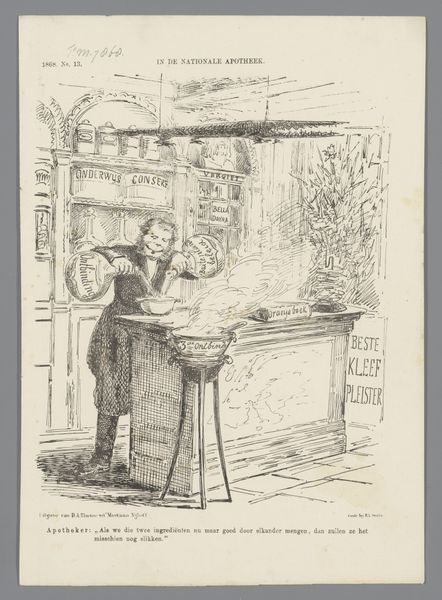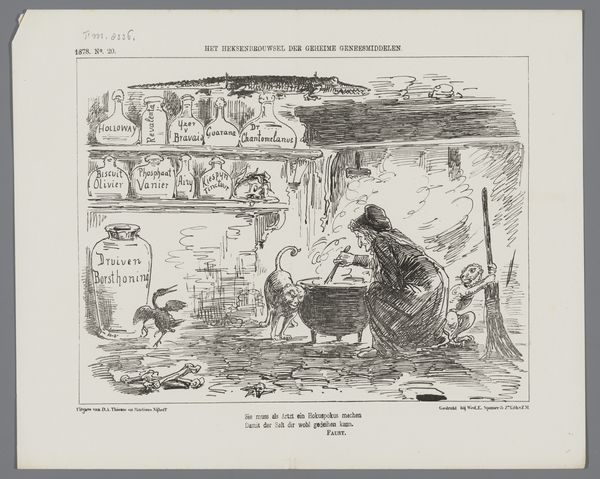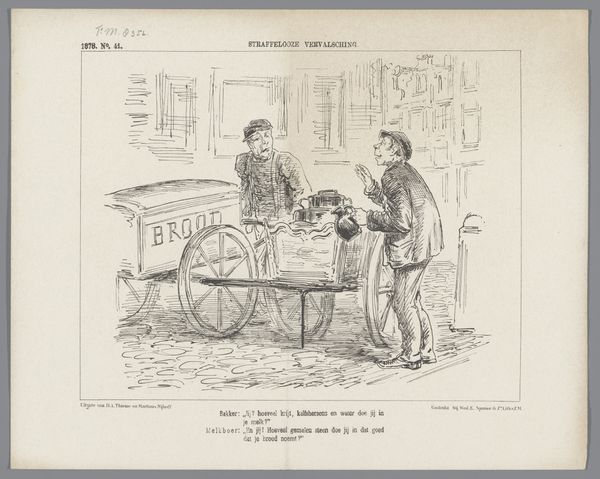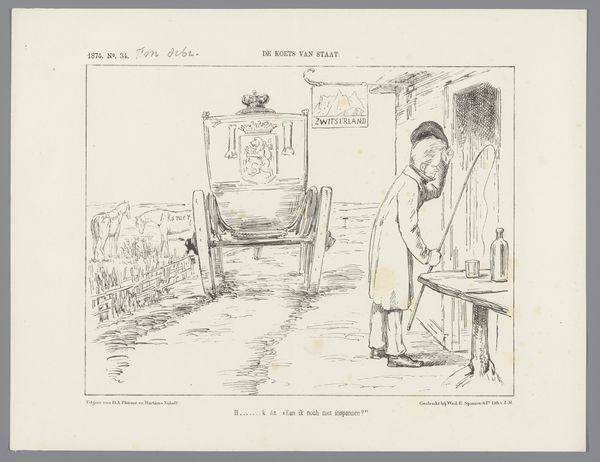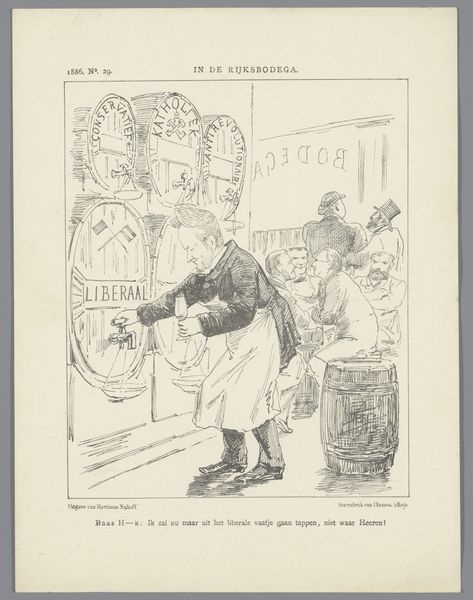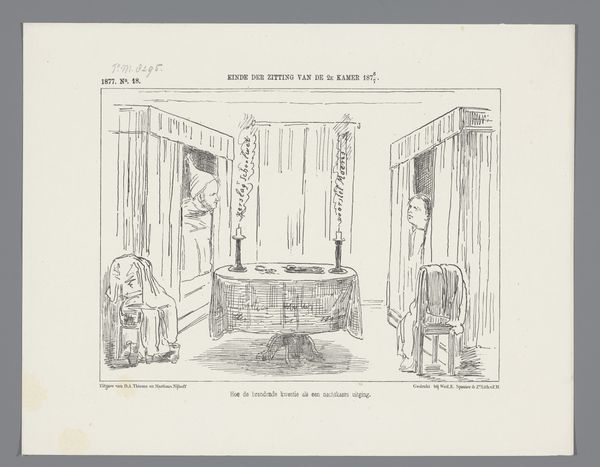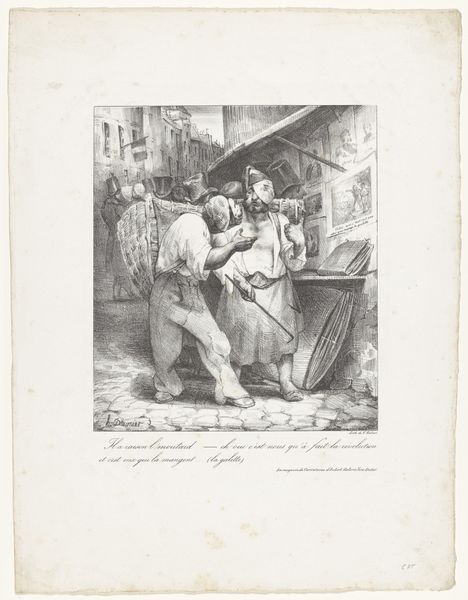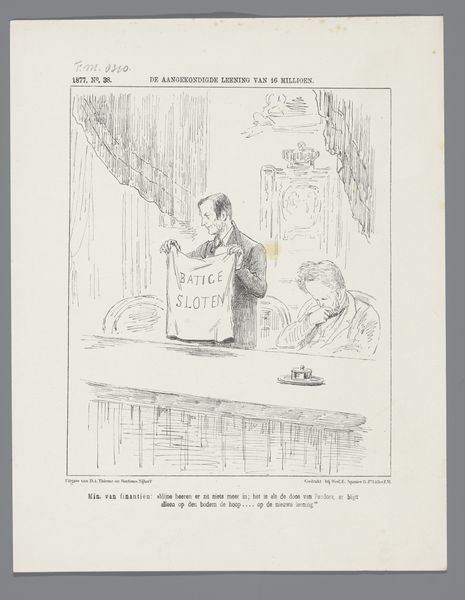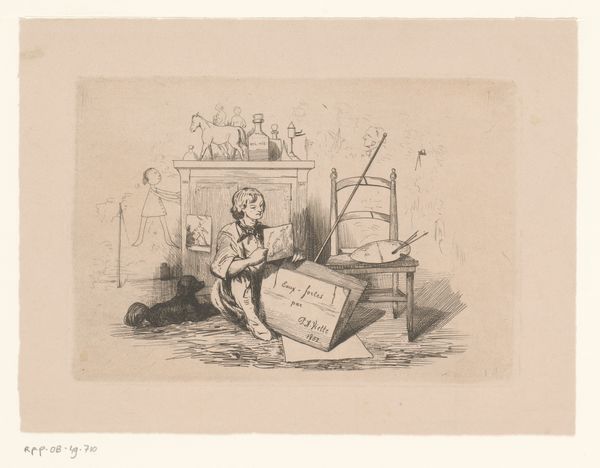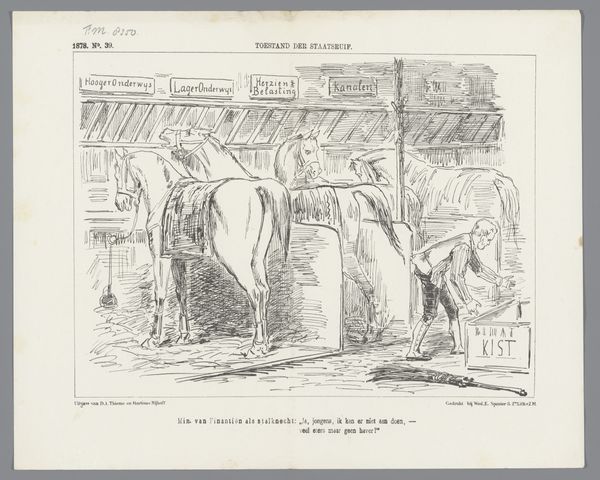
Dimensions: height 215 mm, width 275 mm
Copyright: Rijks Museum: Open Domain
Curator: This print, dating to 1867, is titled "Spotprent op kabinet Heemskerk, 1868" by Johan Michaël Schmidt Crans. It's rendered using lithography and intaglio techniques, giving it a fine, detailed quality. Editor: My immediate impression is a sense of staged awkwardness. The figures seem caught in various degrees of departure and arrival, all framed within this very linear composition. Curator: Precisely. Note how the artist employs contrasting light and shadow to direct the viewer’s gaze. The stark black lines of the carriage and doorway, for instance, command attention, balanced by the lighter tones within the tavern interior. Structurally, there’s a strong diagonal dynamic leading from the lower left to the upper right. Editor: Beyond its formal composition, this artwork is steeped in social critique. It clearly references the Heemskerk cabinet, reflecting the political turbulence of the time. The "Behendig en Loos" sign on the carriage—skillful and loose— hints at the perceived dexterity and perhaps, slipperiness of the government officials. This resonates within a broader history of political cartoons which serve to satirize figures of power. Curator: Yes, the caricature is certainly intentional. Notice the exaggerated expressions and postures of the figures. The artist strategically distorts reality to emphasize specific traits and comment on perceived flaws or behaviors, adhering to well-established conventions for satirical prints of the era. Editor: Moreover, we must consider how class dynamics play out here. The inside tavern space implies one type of patron versus those seemingly ready for transport. These spatial divides emphasize both a literal movement from the old guard, as well as a deeper disruption from broader social mobility in the period. Curator: An incisive observation. The very act of illustrating such tensions solidifies art's role as a medium for social commentary. The piece manages to be both historically situated and visually compelling. Editor: Absolutely, and recognizing the context makes visible to modern audiences ways power imbalances endure – which remains an important charge for art today.
Comments
No comments
Be the first to comment and join the conversation on the ultimate creative platform.

